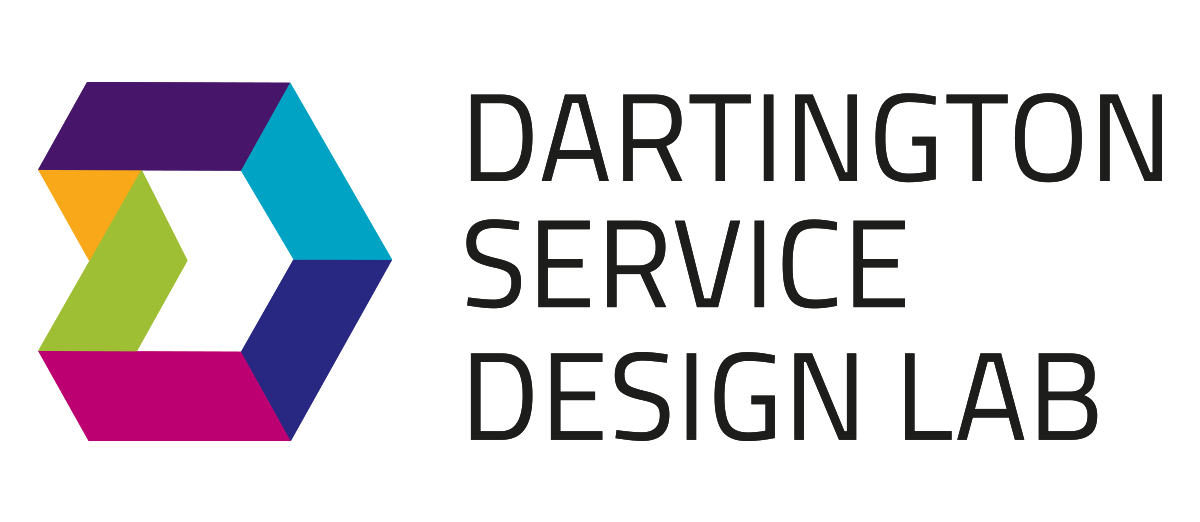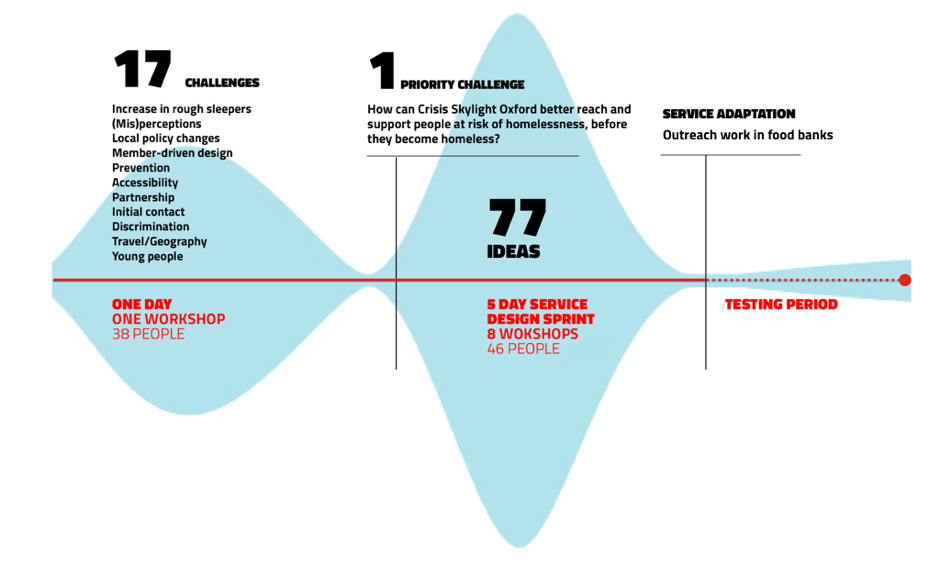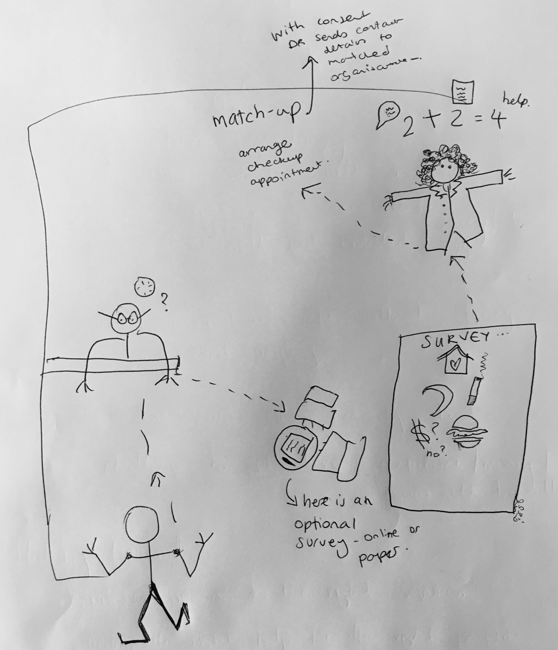Why projects need evolution to avoid extinction
Ben Hartridge | Researcher
The Hothouses for Innovation initiative is a service design collaboration between the Dartington Service Design Lab and Crisis, the national homelessness charity. The aim: to co-produce, with service users, an adaptation to Crisis’ service that would address a new local challenge. Our researcher, Ben Hartridge, explains why it’s vital that service design doesn’t end with one prototype but extends to trying, testing and improving.
Applying the tools to real local challenges
WD-40, a spray-on lubricating oil, is one of the most widely recognised products on the planet. But have you ever wondered why it has such an unusual name?
WD-40 stands for ‘Water Displacement, 40th Formula’. Yep, that’s right. The product known across the world for its slick recipe is actually the 40th version in a long line (39 to be exact!) of ‘failed’ versions. But that’s not quite right… WD-1 wasn’t a failure – it was the first step towards a great product. And WD-39 wasn’t simply rejected – it was improved.
The success of WD-40 shows how important it is that, when we recognise that something isn’t working, we learn from it and don’t see it as a failure. This applies equally whether we’re designing services for children, families and communities or developing a new product.
Recently, after a six-month pilot, one of our partners decided not to continue with a service we co-produced with their staff and service users. But it’s clear by now that this wasn’t a failure. An innovation project like this one is about developing new ideas and seeing the potential in early iterations.
It’s why, at the Lab, we believe that service design doesn’t end once the prototype has been agreed. We stay with our partners and develop a rapid cycle testing framework that supports the ongoing implementation and improvement of the design.
Seeing rapid cycle testing in action
In the Hothouses for Innovation project with Crisis, we extended the classic ‘double diamond’ design approach with a testing period that focused on improving the service’s design and implementation.
Identifying the challenges and priority areas for Hothouses for Innovation
The Oxford design team chose outreach in food banks for sound reasons. First, all design sprint participants identified the need to work in ‘upstream’ services – those, such as GPs and JobCentres, that people encounter before their situation becomes acute. This reflects wider evidence on homelessness prevention which identifies that some groups are more at risk and many people are in touch with other services before they become homeless. Second, the Homelessness Prevention Trailblazer in Oxford was starting to do this work, but not in food banks, so there was a gap. Third, people using Crisis’ service in Oxford described how the stigmatisation of homelessness prevents people who are struggling from reaching out for help. In food banks, they argued, the stigma is no longer there because people are already getting help.
Sketch from service user co-production session
The Oxford team started implementing the co-produced service design in food banks; FB-1 if you will. We collected data on the work for six months. At a cycle point midway through the testing phase we checked in with the delivery staff and the data to see how the service could be improved. In the second iteration, FB-2, the Oxford team started making more visits to food banks on Fridays when the food banks appeared to be busier. At the end of the testing phase, the quantitative and qualitative data we’d collected allowed Crisis to make an informed decision about whether to scale up, re-test or discontinue the work.
In this case Crisis decided to discontinue their food bank outreach work in Oxford. The data showed that the number of people at risk of homelessness seeking advice at the food bank was lower than hoped. The staff also reflected the outreach work was mainly delivering information, advice and guidance rather than one to one coaching. The team felt it would be a better use of resources to train other people to deliver this as a referral route into Crisis’ service.
This testing phase captured important insights and learning for Crisis and others. Crisis continues to work successfully with JobCentres in other areas to identify people at risk of homelessness. Trialling the model in food banks has helped Crisis to understand that location, local services and relationships are important in designing upstream prevention services. There is also value in providing information, advice and guidance in food banks. Many people who used the food banks were open to accessing advice on homelessness and is something that could be shared with the local authority and other advice services. We also surfaced information that can be used in the future: people were more likely to travel from areas with very few services than from places where food banks are alongside JobCentres and GP surgeries.
What does this mean?
Crisis Skylight Oxford should be applauded for recognising early, with the help of our rapid cycle testing framework, that the service design wasn’t working for the organisation. The staff acted decisively to stop delivery, but valuable learning for the wider sector was not lost. It will inform continued work on designing better prevention services. Unlike the secret formula for WD-40, the Lab and Crisis don’t keep the learning from the Hothouses for Innovation initiative to ourselves. We have shared it widely in reports, workshops and seminars so that FB-3, whoever delivers it, will build on what has been before.
The spirit of openness and improvement is one that should be shared across the public and charity sectors. We needn’t learn only from our own experience, but from each other’s too.


